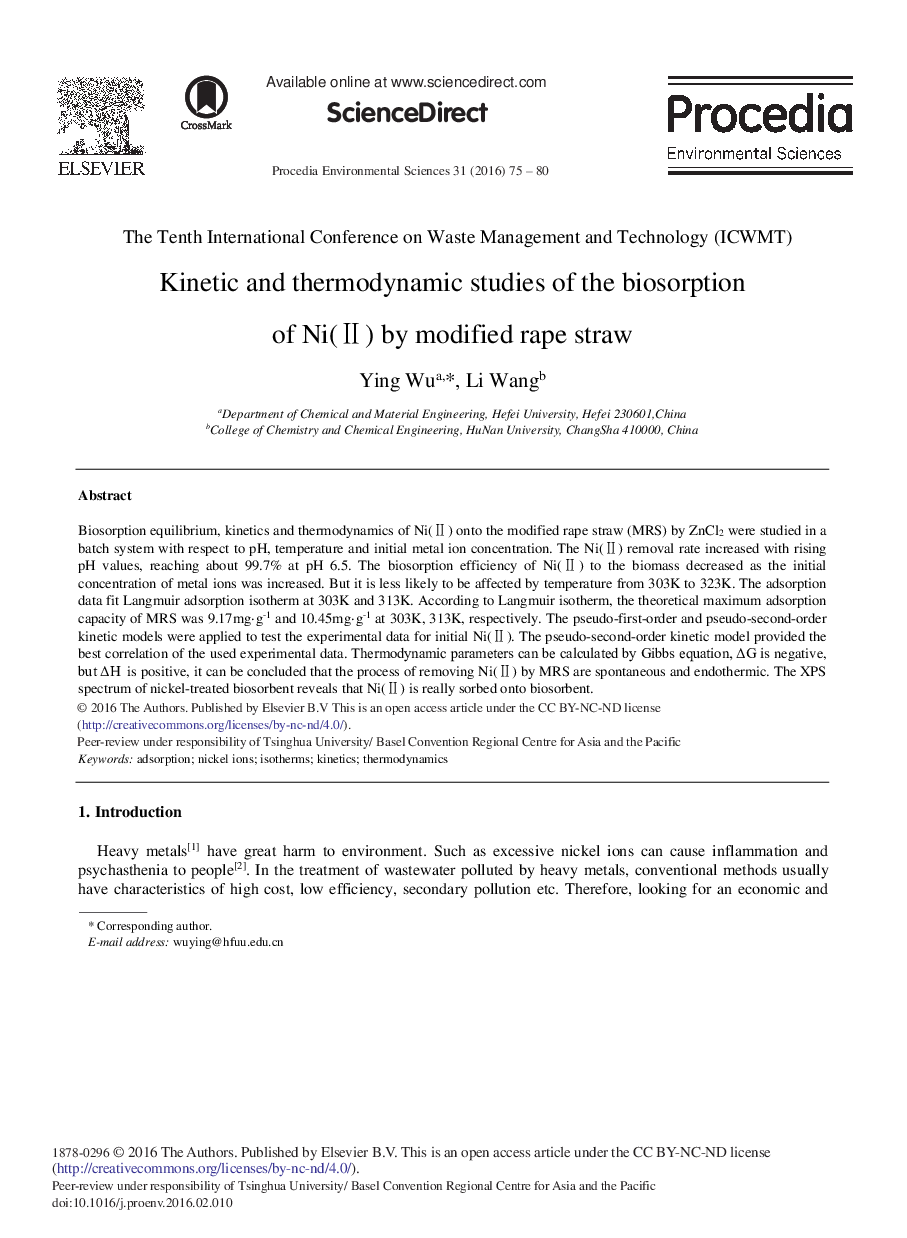| کد مقاله | کد نشریه | سال انتشار | مقاله انگلیسی | نسخه تمام متن |
|---|---|---|---|---|
| 4401522 | 1618613 | 2016 | 6 صفحه PDF | دانلود رایگان |
کلمات کلیدی
1.مقدمه
2. مواد و روشها
2.1. آماده سازی کاه کلزای دارای سطح اصلاح شده
2.2. محلول های Ni(II) برای آزمونهای جذب
2.3. روش آزمایش
3. نتایج و بحث
3.1. تعیین ویژگیهای کاه کلزا و کاه کلزای اصلاح شده
شکل 1. (a) تصویر SEM کاه کلزا، (b) تصویر SEM کاه کلزای اصلاح شده، (c) جذب (در) کاه کلزای اصلاح شده
3.2. تاثیر متغیرهای عملکردی بر جذب Ni(II)
شکل 2. تاثیر متغیرهای عملکردی روی جذب Ni(II)
3.3. مطالعات سینتیکی
جدول 1. پارامترهای سینتیکی برای Ni(II) روی کاه کلزای اصلاح شده
3.4. مطالعات ایزوترم
جدول 2. ثابتهای ایزوترم و ضرایب همبستگی
3.5. مطالعات ترمودینامیکی
جدول 3. پارامترهای ترمودینامیکی
3.6. آنالیز طیف نگاری فوتوالکترونی اشعه ایکس
شکل 3. XPS جاذب زیستی که نشان دهنده عناصر مختلف است.
4. نتیجه گیری
Biosorption equilibrium, kinetics and thermodynamics of Ni(II) onto the modified rape straw (MRS) by ZnCl2 were studied in a batch system with respect to pH, temperature and initial metal ion concentration. The Ni(II) removal rate increased with rising pH values, reaching about 99.7% at pH 6.5. The biosorption efficiency of Ni(II) to the biomass decreased as the initial concentration of metal ions was increased. But it is less likely to be affected by temperature from 303K to 323K. The adsorption data fit Langmuir adsorption isotherm at 303K and 313K. According to Langmuir isotherm, the theoretical maximum adsorption capacity of MRS was 9.17mg·g-1 and 10.45mg·g-1 at 303K, 313K, respectively. The pseudo-first-order and pseudo-second-order kinetic models were applied to test the experimental data for initial Ni(II). The pseudo-second-order kinetic model provided the best correlation of the used experimental data. Thermodynamic parameters can be calculated by Gibbs equation, ΔG is negative, but ΔH is positive, it can be concluded that the process of removing Ni(II) by MRS are spontaneous and endothermic. The XPS spectrum of nickel-treated biosorbent reveals that Ni(II) is really sorbed onto biosorbent.
Journal: Procedia Environmental Sciences - Volume 31, 2016, Pages 75–80
